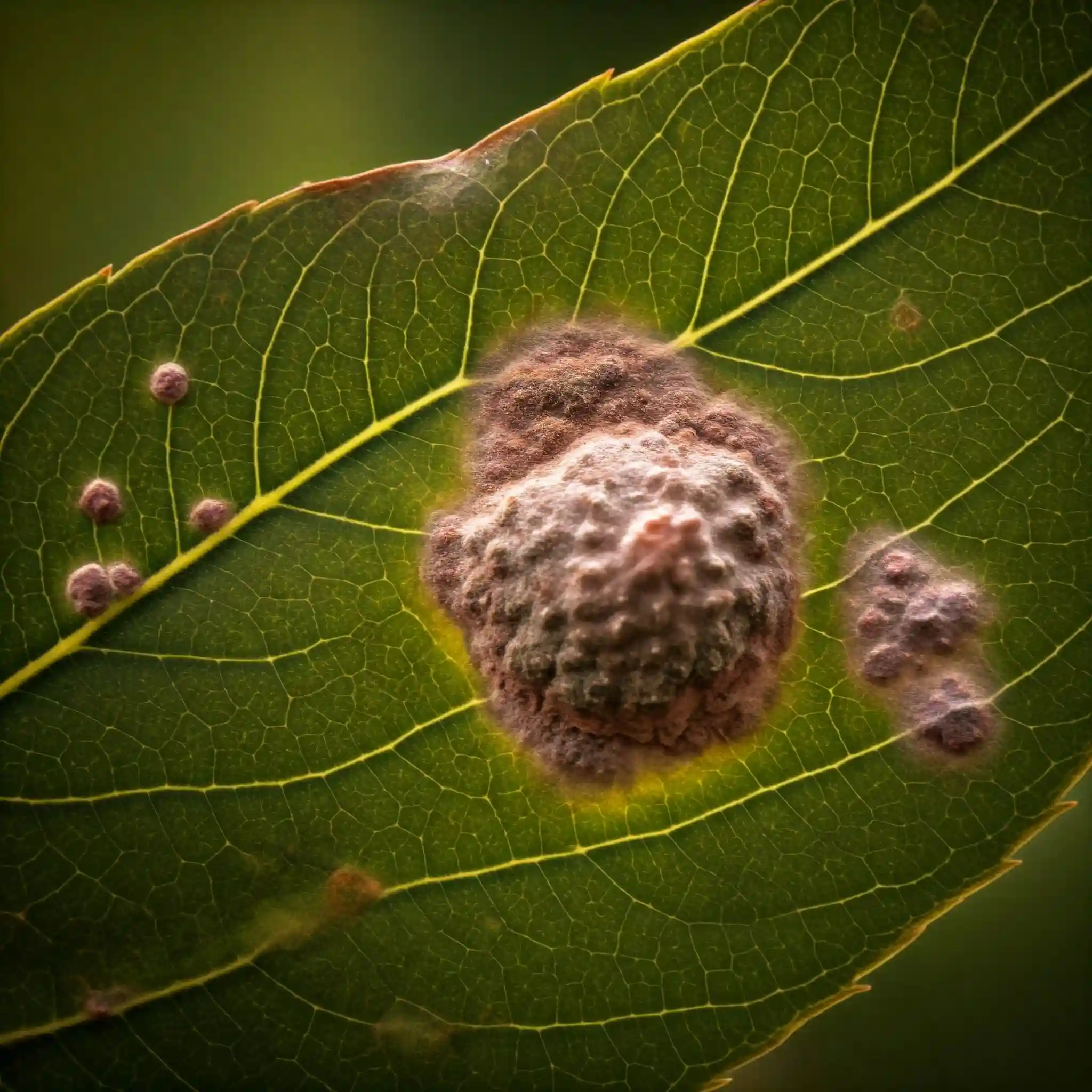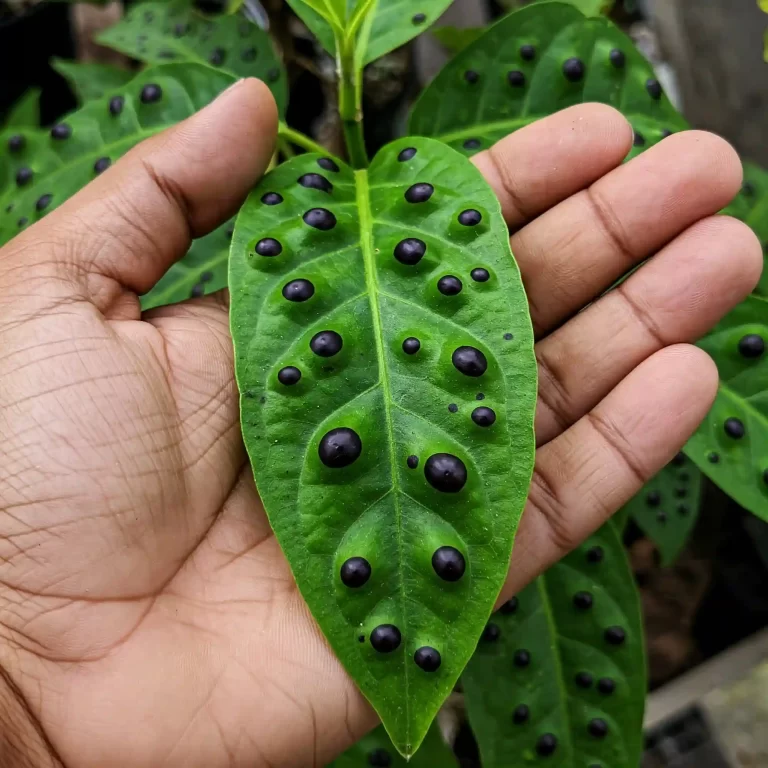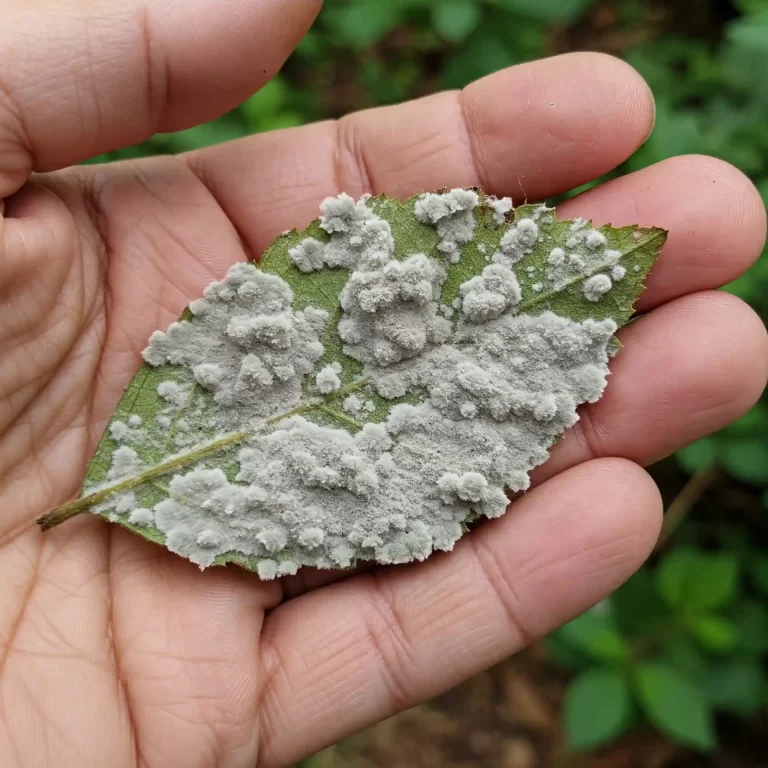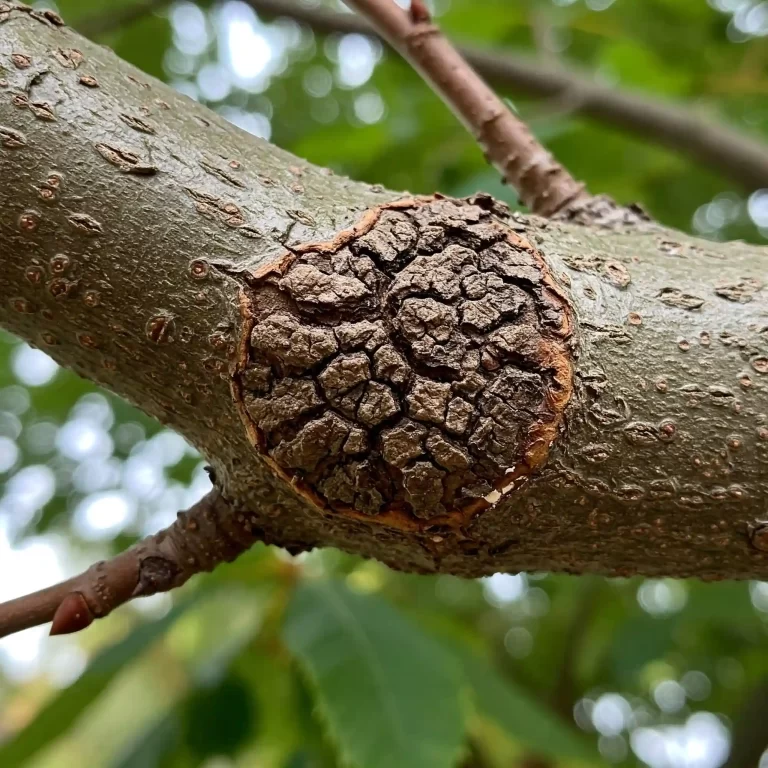Are you seeing those disheartening spots on your beloved tomato plants, or perhaps your prize-winning roses? It’s frustrating, I know. You’ve poured time and effort into your garden, and now this Cercospora leaf spot is threatening to undo all your hard work. The leaves are discolored, the lesions are spreading, and you’re worried about the health of your plants. But here’s the good news: you can take control. Let’s walk through eight practical steps to identify, treat, and prevent this fungal foe, keeping your garden thriving and healthy.
1. Identifying Cercospora Leaf Spot: Early Detection is Key
Early detection is crucial when dealing with Cercospora leaf spot. You might be wondering, “What exactly am I looking for?” Well, it’s not just any spot on a leaf. It’s important to understand that Cercospora leaf spot has a distinct appearance.
Symptoms of Cercospora Leaf Spot:
- Initial Stages: The first sign is often the appearance of small, circular spots on the leaves. These spots might initially be water-soaked, giving them a slightly translucent look.
- Lesion Development: Over time, these spots develop into lesions, which are areas of damaged tissue. The lesions can vary in size and color depending on the plant species affected.
- Color Changes: Typically, the center of the lesion will be gray or brown, while the surrounding area may develop a yellowish halo.
- Leaf Discoloration: As the disease progresses, the affected leaves may start to yellow or even brown completely.
- Premature Leaf Drop: In severe cases, the infected leaves may drop prematurely, weakening the plant and reducing its overall health.
Differentiating Cercospora Leaf Spot from Other Leaf Diseases:
It’s essential to accurately identify Cercospora leaf spot to ensure proper treatment. Other leaf diseases can present similar symptoms, so careful observation is key.
- Septoria Leaf Spot: This disease also causes leaf spots, but the lesions often have small, black fruiting bodies in the center, which are absent in Cercospora leaf spot.
- Bacterial Leaf Spot: Bacterial leaf spots tend to be more irregular in shape and may have a water-soaked appearance.
Visual Cues for Common Affected Plants:
- Tomatoes: On tomato plants, Cercospora leaf spot often appears on older leaves first, gradually moving upwards. The spots are typically small and circular with a distinct yellow halo.
- Roses: Rose leaves infected with Cercospora may develop dark, almost black spots. This can lead to premature leaf drop, significantly impacting the plant’s overall health and appearance.
- Beets: Beets are particularly susceptible to Cercospora leaf spot. The disease can cause numerous small spots on the leaves, leading to significant defoliation if left unchecked.
Tools for Accurate Identification:
- Magnifying Glass: A magnifying glass can be a valuable tool in identifying Cercospora leaf spot. It allows you to closely examine the lesions and look for the presence of tiny, dark fruiting bodies, which are characteristic of the fungus.
- Plant Disease Identification Guides: There are numerous resources available, both online and in print, that can help you identify plant diseases, including Cercospora leaf spot. These resources often include detailed descriptions, images, and diagnostic keys.
Early detection is crucial in managing Cercospora leaf spot effectively. By carefully observing your plants and recognizing the distinct symptoms, you can take prompt action to prevent the disease from spreading and causing significant damage to your garden.
2. Understanding the Causes: Environmental Factors and Spread
Cercospora leaf spot is a fungal disease, and like most fungi, thrives in specific environmental conditions. Understanding these factors is key to preventing and managing its spread.
Humidity and Moisture:
- High Humidity: Cercospora fungi love moisture. High humidity levels create an ideal environment for the fungus to grow and reproduce.
- Leaf Wetness: Prolonged periods of leaf wetness, whether from rain, overhead irrigation, or heavy dew, significantly increase the risk of infection.
- Poor Drainage: Waterlogged soil can lead to increased humidity around the plants, creating a favorable environment for fungal growth.
Air Circulation:
- Stagnant Air: Poor air circulation can trap moisture around the plants, creating a humid microclimate that promotes fungal growth.
- Dense Plant Growth: Overcrowded plants can hinder air circulation, making it more difficult for moisture to evaporate from the leaves.
Temperature:
- Warm Temperatures: While Cercospora can survive in a range of temperatures, warm weather (between 70-80°F or 21-27°C) generally favors its growth and development.
Spread of Cercospora Leaf Spot:
- Fungal Spores: The primary means of spread is through the dispersal of fungal spores. These tiny particles are easily carried by wind, rain, and even splashing water from irrigation.
- Infected Plant Material: Infected plant debris, such as fallen leaves, can harbor the fungus and serve as a source of infection for the following season.
- Contaminated Tools: Garden tools and equipment used on infected plants can also spread the disease if not properly cleaned and disinfected.
Understanding these environmental factors is crucial for effective disease management. By modifying your gardening practices to minimize humidity, improve air circulation, and avoid prolonged leaf wetness, you can significantly reduce the risk of Cercospora leaf spot infections.
3. Effective Fungicide Application: Chemical and Organic Solutions
In cases where Cercospora leaf spot has taken hold, fungicide applications may be necessary. Fungicides are chemical or biological substances that control fungal diseases. It’s important to choose the right fungicide and apply it correctly to maximize effectiveness and minimize potential risks.
Chemical Fungicides:
- Copper-based fungicides: These are broad-spectrum fungicides that can be effective against Cercospora. They work by inhibiting the growth of the fungus. Copper-based fungicides are generally considered less toxic to the environment and beneficial organisms than some synthetic fungicides.
- Systemic fungicides: These fungicides are absorbed by the plant and translocated throughout the plant tissues, providing systemic protection against the fungus. They can be effective in controlling severe infections. It’s crucial to follow the manufacturer’s instructions carefully when using systemic fungicides.
Organic Fungicides:
- Neem oil: Neem oil is a natural plant extract with fungicidal properties. It can be effective in controlling Cercospora leaf spot, especially when applied early in the infection cycle.
- Baking soda solutions: A solution of baking soda and water can also be effective in controlling some fungal diseases, including Cercospora leaf spot.
Application Techniques:
- Thorough Coverage: Ensure that the fungicide solution covers all plant surfaces, including the undersides of the leaves, where spores can easily hide.
- Timing of Application: Apply fungicides at the first sign of infection and repeat applications as needed, according to the product label instructions.
- Weather Conditions: Avoid applying fungicides during windy conditions, as this can lead to drift and off-target application.
Safety Precautions:
- Always wear appropriate personal protective equipment (PPE), such as gloves, long sleeves, and eye protection, when handling fungicides.
- Store fungicides in their original containers in a safe, secure location, out of reach of children and pets.
- Dispose of empty containers properly according to local regulations.
Note: It’s important to rotate fungicides to prevent the development of fungicide-resistant strains of the fungus.
4. Prevention Through Cultural Practices: Crop Rotation and Sanitation
While fungicides offer a direct means of controlling Cercospora leaf spot, implementing sound cultural practices is equally important for disease prevention and long-term garden health. These practices focus on creating an unfavorable environment for the fungus to thrive.
Crop Rotation:
- Breaking the Disease Cycle: Crop rotation involves planting different crops in the same area each year. This strategy helps to break the disease cycle by depriving the fungus of its preferred host plants.
- Choosing Incompatible Plants: Selecting crops that are not susceptible to Cercospora leaf spot can further reduce the risk of infection.
- Planning Crop Rotations: A well-planned crop rotation system can significantly reduce the incidence of Cercospora leaf spot and other soil-borne diseases.
Sanitation Practices:
- Removing Infected Plant Material: Regularly removing and disposing of infected leaves and plant debris is crucial. This helps to reduce the amount of inoculum (fungal spores) available to infect other plants.
- Cleaning Garden Tools: Disinfecting garden tools and equipment between uses can help prevent the spread of the disease. A solution of bleach and water can be used to disinfect tools effectively.
- Maintaining a Clean Garden: Keeping the garden area free of weeds and debris can also help to reduce the risk of disease spread.
Other Cultural Practices:
- Proper Spacing: Adequate spacing between plants allows for better air circulation, which helps to reduce humidity and create a less favorable environment for fungal growth.
- Pruning: Pruning to improve air circulation can also help to reduce the risk of infection.
- Watering Techniques: Avoid overhead watering, as this can splash water onto the leaves and spread spores. Water the plants at the base to minimize leaf wetness.
By implementing these cultural practices, you can create a less favorable environment for Cercospora leaf spot to thrive. This not only reduces the risk of infection but also promotes overall plant health and vigor.
5. Strengthening Plant Immunity: Healthy Plants Resist Disease
Just as our immune systems help us fight off diseases, plants also have natural defense mechanisms. By strengthening a plant’s overall health and vigor, we can enhance its natural resistance to diseases like Cercospora leaf spot.
The Role of Soil Health:
- Nutrient-Rich Soil: Healthy soil provides plants with the essential nutrients they need for growth and development. Nutrient deficiencies can weaken plants, making them more susceptible to diseases.
- Beneficial Soil Microorganisms: A diverse population of beneficial soil microorganisms, such as mycorrhizal fungi, can help plants access nutrients and water more efficiently, improving their overall health and resilience.
Essential Nutrients and Fertilizers:
- Balanced Fertilization: Providing plants with a balanced supply of essential nutrients, including nitrogen, phosphorus, and potassium, is crucial for healthy growth and disease resistance.
- Organic Fertilizers: Organic fertilizers, such as compost and manure, can improve soil health and provide a slow and steady release of nutrients to plants.
- Avoid Over-Fertilization: Over-fertilization can weaken plant cell walls, making them more susceptible to infection.
Managing Plant Stress:
- Water Stress: Both overwatering and underwatering can stress plants, making them more vulnerable to diseases. Consistent and appropriate watering is essential.
- Temperature Stress: Extreme temperatures, whether too hot or too cold, can stress plants and weaken their immune systems.
- Light Stress: Insufficient light can also stress plants, making them more susceptible to disease.
Natural Ways to Enhance Plant Immunity:
- Plant Extracts: Some plant extracts, such as those derived from garlic or neem oil, have been shown to enhance plant immunity and provide some level of disease control.
- Compost Tea: Compost tea is a liquid fertilizer made from compost that can introduce beneficial microorganisms to the soil, promoting plant health and disease resistance.
By focusing on soil health, providing adequate nutrition, and minimizing stress, you can help your plants build strong natural defenses against diseases like Cercospora leaf spot. Remember, healthy plants are better equipped to withstand challenges and thrive.
6. Natural Remedies and Biological Controls: Eco-Friendly Management
While chemical fungicides can be effective in controlling Cercospora leaf spot, many gardeners prefer to use more natural and eco-friendly approaches. This section explores various natural remedies and biological controls that can help manage this fungal disease.
Natural Remedies:
- Neem Oil: Neem oil is a natural plant extract derived from the neem tree. It has fungicidal properties and can be effective in controlling Cercospora leaf spot. Neem oil can be applied to plants as a foliar spray.
- Baking Soda Solution: A solution of baking soda and water can also be effective in controlling some fungal diseases, including Cercospora leaf spot. The alkaline nature of the solution can help to inhibit fungal growth.
- Essential Oils: Some essential oils, such as tea tree oil and clove oil, have antifungal properties and can be used to control Cercospora leaf spot. However, it’s important to dilute essential oils properly and use them cautiously to avoid damaging plants.
Biological Controls:
- Beneficial Fungi: Certain beneficial fungi, such as Trichoderma species, can compete with Cercospora fungi for resources and help to suppress disease. These fungi can be applied to the soil or directly to the plants.
- Beneficial Bacteria: Some beneficial bacteria can also help to control fungal diseases. These bacteria can produce substances that inhibit the growth of the fungus.
Creating a Balanced Garden Ecosystem:
- Encouraging Beneficial Organisms: Creating a diverse garden ecosystem that supports beneficial organisms, such as insects and birds, can help to naturally control pests and diseases.
- Avoiding Broad-Spectrum Pesticides: The use of broad-spectrum pesticides can kill beneficial insects and disrupt the natural balance of the garden ecosystem.
Benefits of Natural Solutions:
- Environmental Friendliness: Natural remedies and biological controls are generally less harmful to the environment and beneficial organisms than chemical fungicides.
- Reduced Risk to Human Health: Many natural remedies and biological controls pose a lower risk to human health and safety.
- Improved Soil Health: Some natural remedies, such as compost tea, can also improve soil health, which can benefit plant growth and disease resistance.
While natural remedies and biological controls may not always provide complete control over Cercospora leaf spot, they can be effective when used as part of an integrated disease management approach. By combining cultural practices, natural remedies, and when necessary, targeted fungicide applications, you can effectively manage this fungal disease and maintain a healthy garden.
7. Long-Term Care Strategies: Protecting Your Garden Year-Round
While we’ve focused on managing active Cercospora leaf spot infections, proactive long-term care strategies are crucial for preventing future outbreaks. By adopting a holistic approach to garden management, you can create a less hospitable environment for the fungus and ensure the health and vitality of your plants throughout the year.
Seasonal Garden Maintenance:
- Fall Cleanup: In the fall, remove and dispose of infected plant debris, such as fallen leaves and stems. This helps to reduce the amount of inoculum (fungal spores) that can overwinter and infect plants in the following season.
- Spring Pruning: Pruning can improve air circulation within the plant canopy, which can help to reduce humidity and create a less favorable environment for fungal growth. Remove any infected or dead branches during pruning.
Monitoring and Adjusting Practices:
- Weather Monitoring: Keep an eye on weather patterns, particularly humidity levels and rainfall. Adjust your watering practices accordingly to minimize leaf wetness.
- Plant Monitoring: Regularly inspect your plants for any signs of disease. Early detection allows for prompt action to control the spread of infection.
Long-Term Soil Management:
- Soil Health: Maintaining healthy soil is crucial for plant health and disease resistance. Practices such as composting, cover cropping, and avoiding excessive tillage can improve soil health and create a more favorable environment for plant growth.
- Soil Amendments: Adding organic matter to the soil can improve drainage and reduce soil compaction, which can help to reduce soil moisture and create a less favorable environment for fungal growth.
Garden Diversity:
- Crop Rotation: As mentioned earlier, crop rotation is a key strategy for long-term disease management. By rotating crops, you can break the disease cycle and reduce the buildup of soil-borne pathogens.
- Planting Resistant Varieties: If available, consider planting varieties of plants that are known to be more resistant to Cercospora leaf spot.
By implementing these long-term care strategies, you can create a more resilient garden that is better able to withstand the challenges of Cercospora leaf spot and other diseases. Remember, a healthy garden is a result of consistent care and attention to detail.
8. Advanced Diagnostic Techniques: When to Seek Expert Help
While we’ve covered various methods for identifying and managing Cercospora leaf spot, there may be instances where seeking expert help is beneficial. This section will discuss when to consult a plant pathologist or other experts and explore advanced diagnostic techniques that can aid in disease management.
When to Seek Expert Help:
- Uncertain Diagnosis: If you are unsure about the diagnosis of the disease, consulting a plant pathologist can help confirm the presence of Cercospora leaf spot and rule out other potential causes.
- Severe Infection: If the infection is severe or widespread, it may be beneficial to seek expert advice on the most effective management strategies.
- Persistent Problems: If your efforts to control Cercospora leaf spot have been unsuccessful, a plant pathologist can help identify potential underlying issues and recommend appropriate solutions.
Advanced Diagnostic Techniques:
- Laboratory Testing: In some cases, laboratory testing may be necessary to confirm the presence of Cercospora leaf spot. This can involve microscopic examination of infected plant material to identify the specific fungal pathogen.
- Disease Surveys: Conducting disease surveys can help to track the spread of Cercospora leaf spot and identify areas within your garden that are more susceptible to infection.
Understanding the Disease Cycle:
- Life Cycle of the Fungus: Understanding the life cycle of the Cercospora fungus can help you to identify weak points in its lifecycle and develop more targeted management strategies.
- Environmental Factors: By monitoring environmental conditions and their impact on the fungus, you can anticipate potential outbreaks and take proactive measures to prevent infection.
Interpreting Test Results and Developing a Management Plan:
- Expert Interpretation: A plant pathologist can help you interpret test results and develop a comprehensive management plan based on the specific characteristics of your garden and the severity of the infection.
- Implementing Recommendations: Following the recommendations of a plant pathologist can help you effectively manage Cercospora leaf spot and minimize future outbreaks.
By seeking expert help when necessary and utilizing advanced diagnostic techniques, you can gain a deeper understanding of the disease and implement more effective management strategies.
FAQ
In this section, we’ll address some of the most common questions regarding Cercospora leaf spot.
Q: How to identify Cercospora leaf spot on tomato plants?
A: On tomato plants, Cercospora leaf spot typically appears as small, circular spots with a gray or brown center and a distinct yellow halo. These spots often start on older leaves and gradually spread upwards.
Q: Best organic treatment for Cercospora leaf spot on roses?
A: Neem oil is a highly effective organic treatment for Cercospora leaf spot on roses. It acts as a natural fungicide and can help to control the spread of the disease. Baking soda solutions can also be used as a natural and effective treatment for Cercospora leaf spot on roses.
Q: What are the environmental causes of Cercospora leaf spot spread?
A: High humidity, prolonged leaf wetness, and poor air circulation are the primary environmental factors that contribute to the spread of Cercospora leaf spot. Warm temperatures also favor the growth and development of the fungus.
Q: Effective crop rotation strategies to prevent Cercospora leaf spot?
A: Rotating crops can help to break the disease cycle. Avoid planting susceptible crops, such as tomatoes, beets, and carrots, in the same location year after year. Consider planting crops that are not susceptible to Cercospora leaf spot in between susceptible crops.
Q: Detailed guide to recognizing early symptoms of Cercospora leaf spot?
A: Early symptoms of Cercospora leaf spot include the appearance of small, circular spots on the leaves. These spots may initially be water-soaked and may gradually develop into larger lesions with a gray or brown center and a yellow halo.
Q: Natural remedies for controlling Cercospora leaf spot in vegetable gardens?
A: Neem oil, baking soda solutions, and essential oils like tea tree oil and clove oil can be used as natural remedies to control Cercospora leaf spot in vegetable gardens. However, it’s important to use these remedies cautiously and follow the recommended dilution rates.
Q: How to improve air circulation to prevent Cercospora leaf spot damage?
A: Proper spacing between plants can help to improve air circulation and reduce humidity around the plants. Pruning to remove excess foliage can also help to improve air flow.
Q: What are the long-term effects of Cercospora leaf spot on plant health?
A: Severe Cercospora leaf spot infections can lead to defoliation, reduced plant vigor, and decreased yield. In severe cases, the disease can even kill the plant.
Q: How often should I apply fungicide for Cercospora leaf spot control?
A: The frequency of fungicide applications will depend on the specific product used and the severity of the infection. Always follow the manufacturer’s instructions for application rates and intervals.
Q: Explain the lifecycle of Cercospora leaf spot and its spread?
A: Cercospora leaf spot is caused by fungi in the genus Cercospora. The fungus overwinters in infected plant debris. In the spring, it produces spores that are spread by wind, rain, and splashing water. These spores can infect new plant tissue, starting the cycle anew.
Conclusion:
Cercospora leaf spot can be a challenging disease to manage, but by implementing a combination of cultural practices, natural remedies, and when necessary, chemical controls, you can effectively protect your garden and minimize the impact of this fungal pathogen. Remember, a vigilant approach, coupled with a thorough understanding of the disease and your garden’s unique needs, is key to success.




